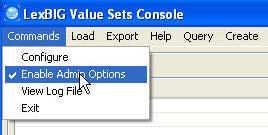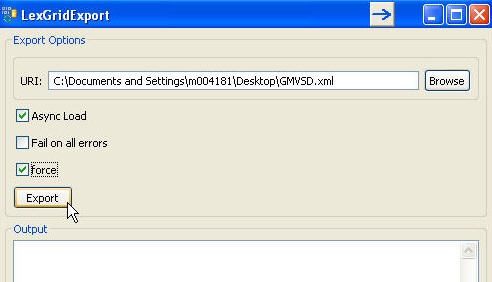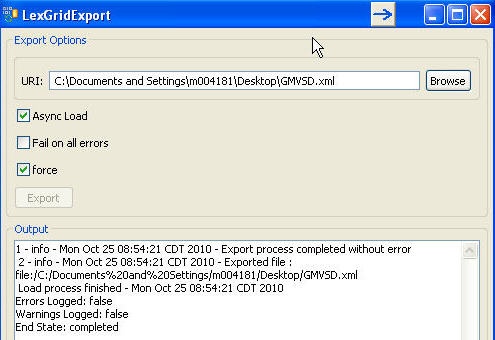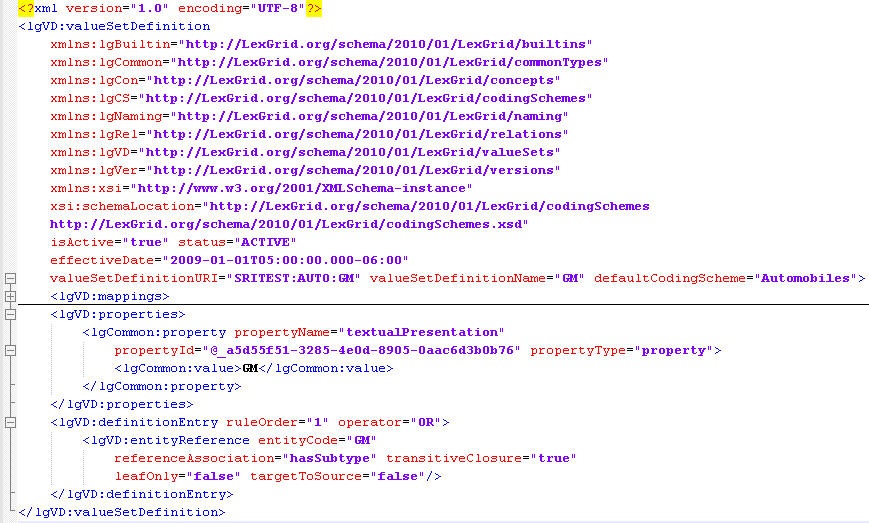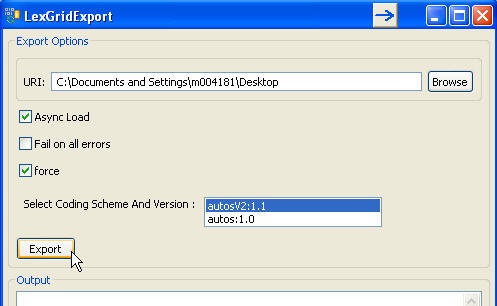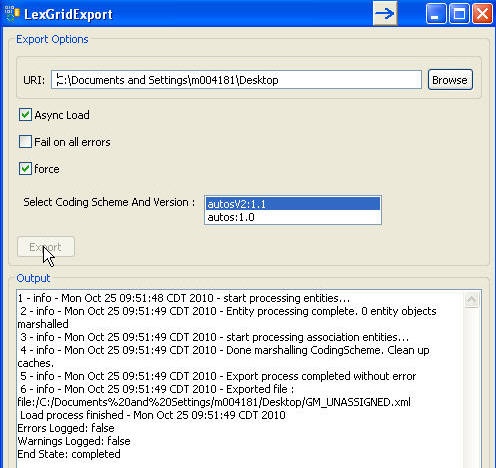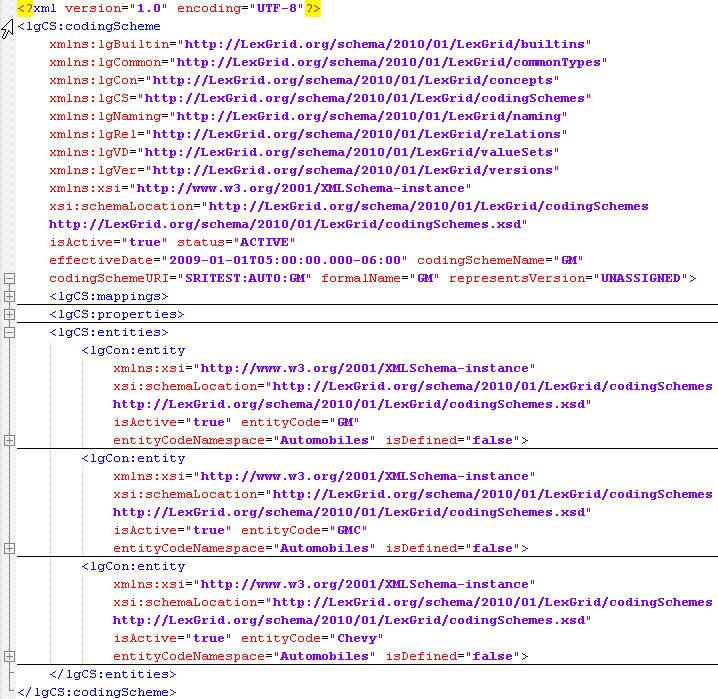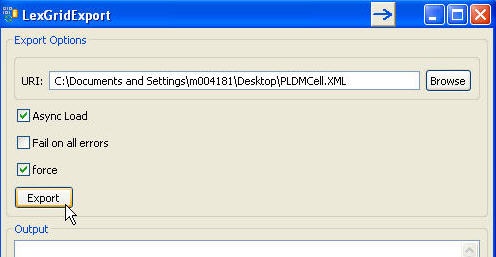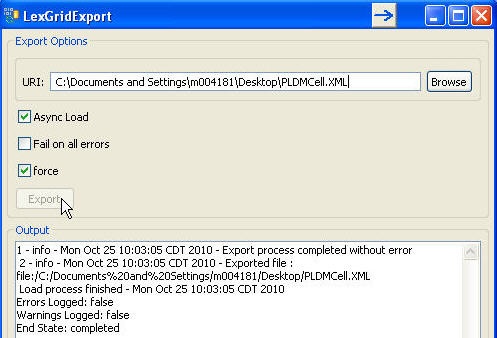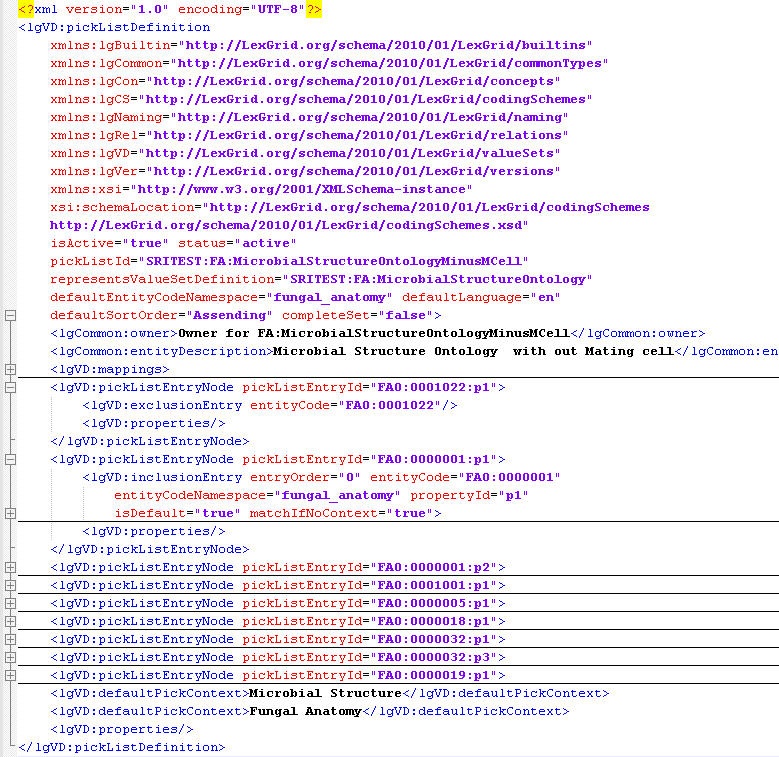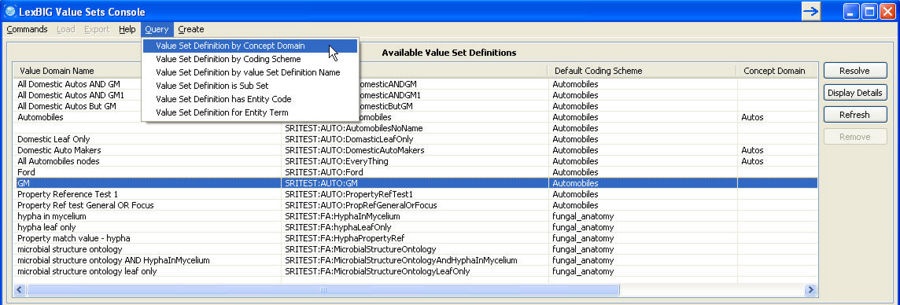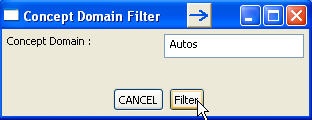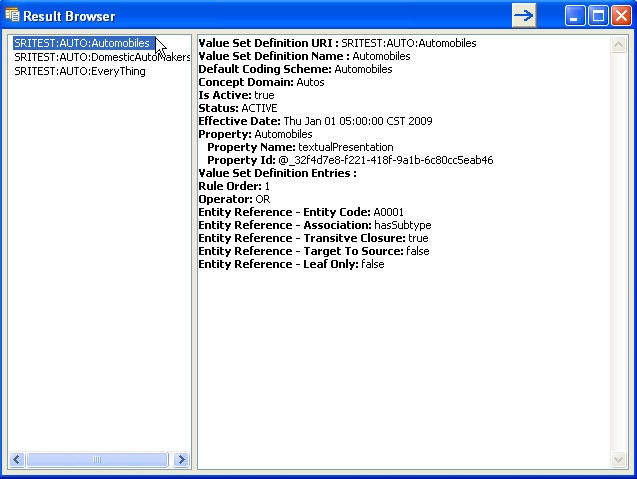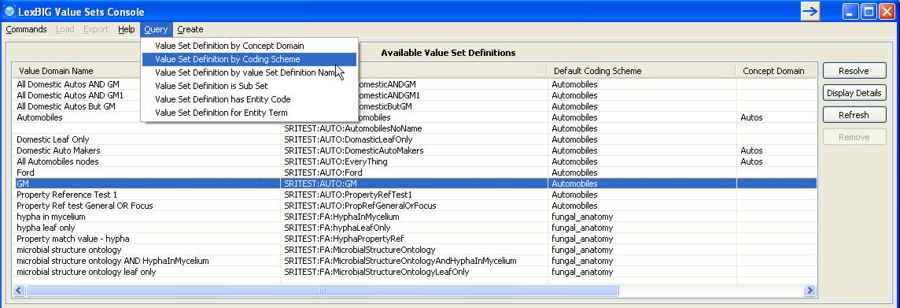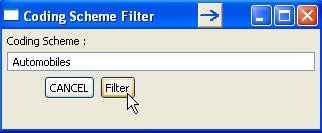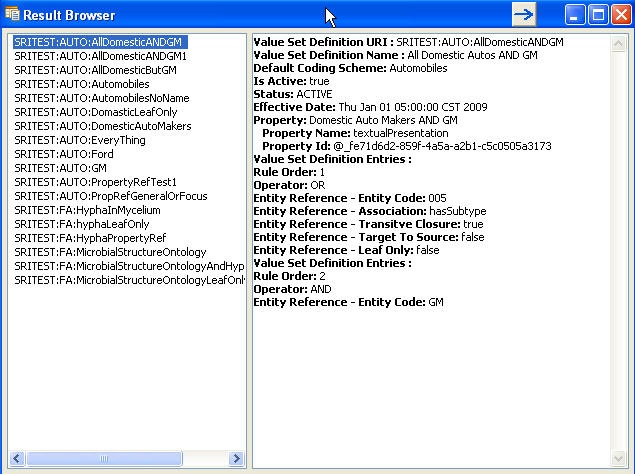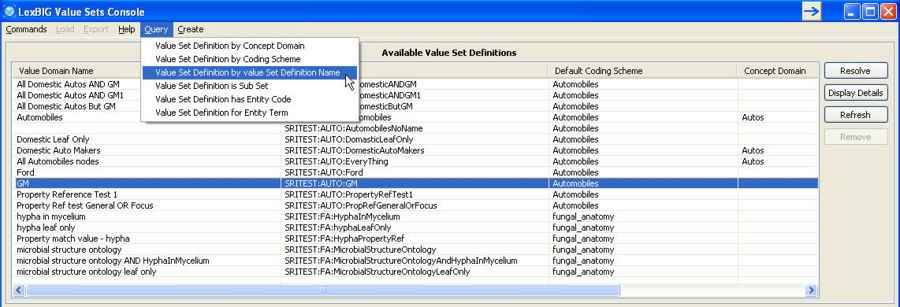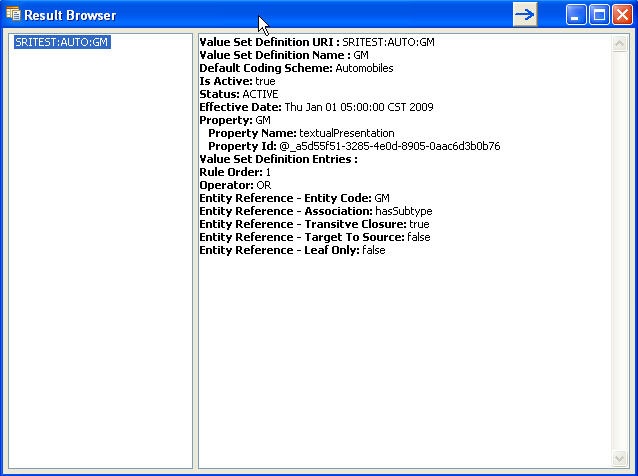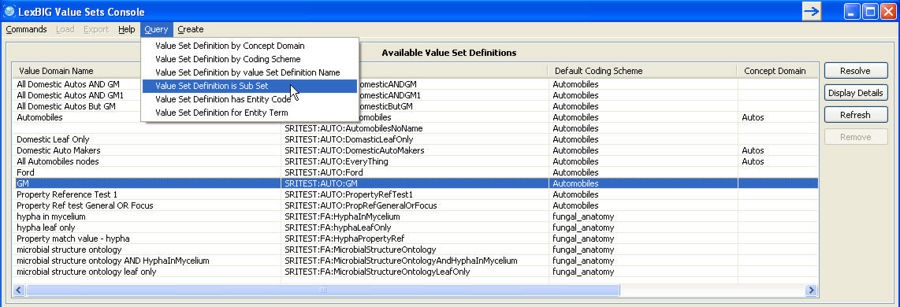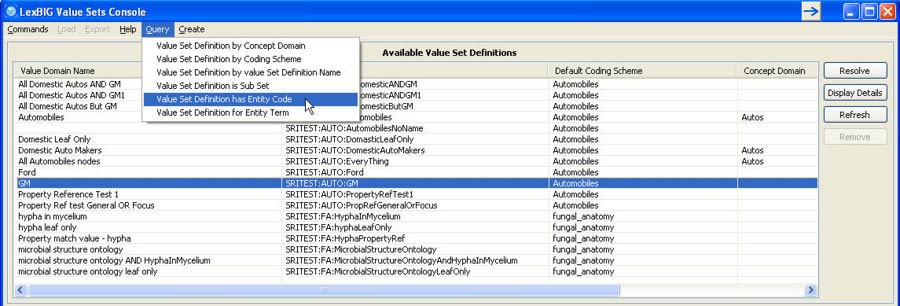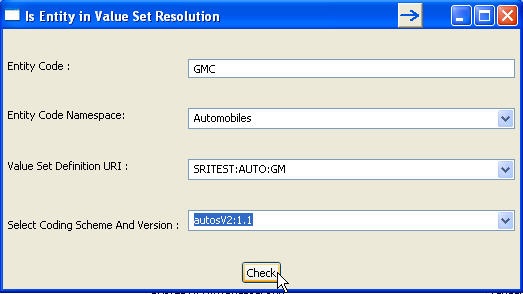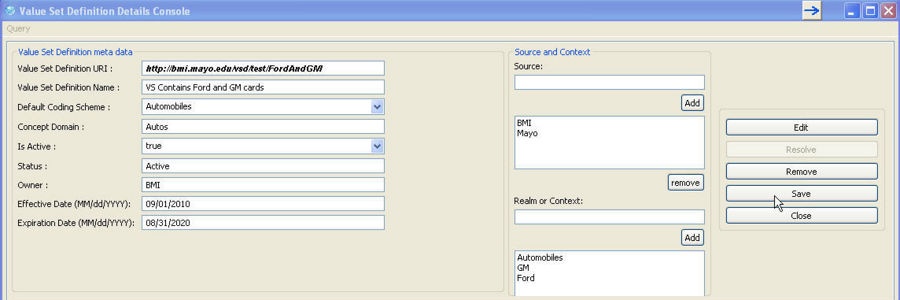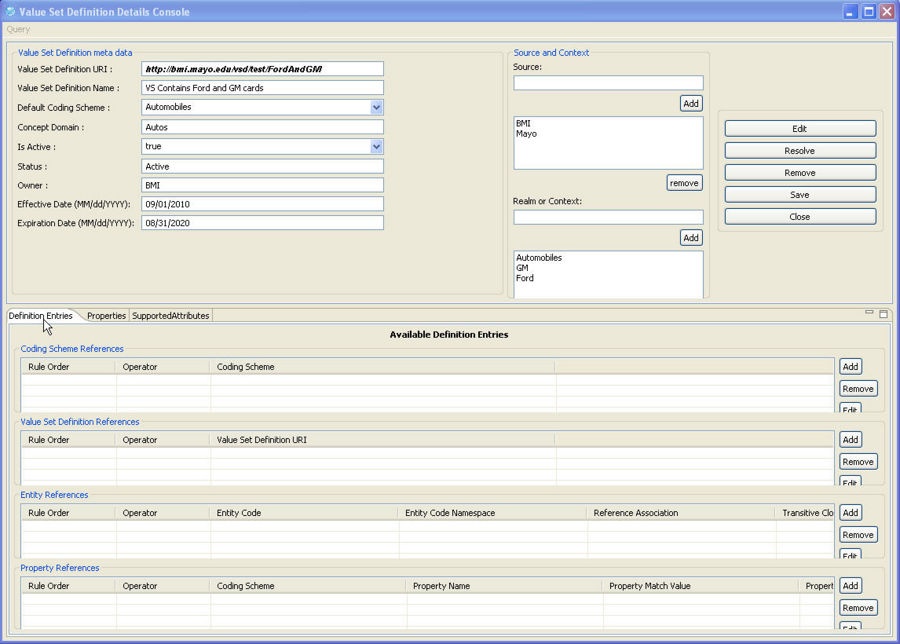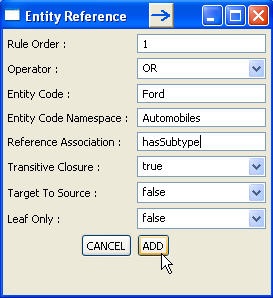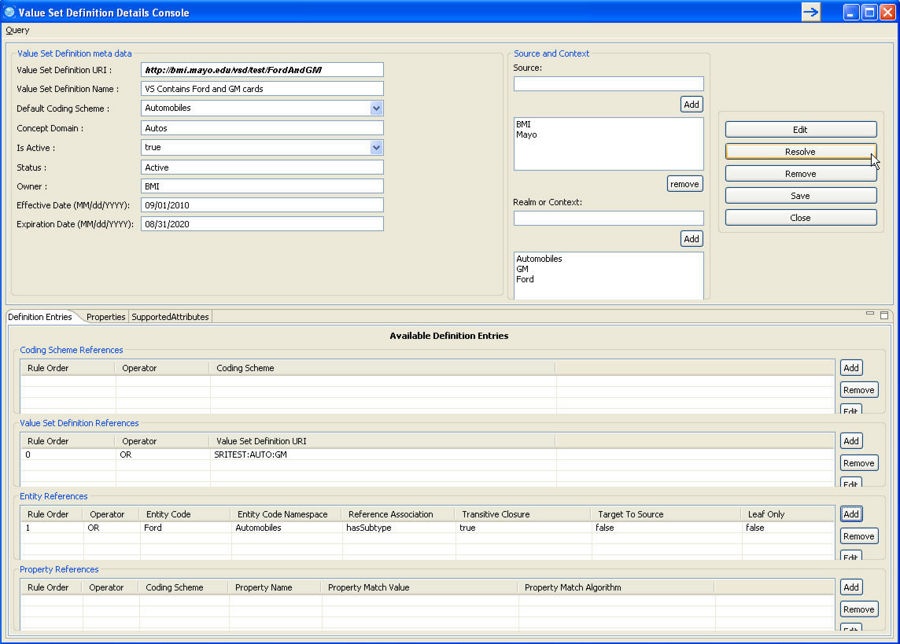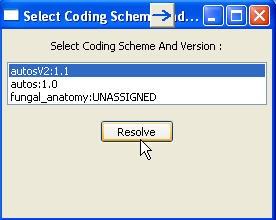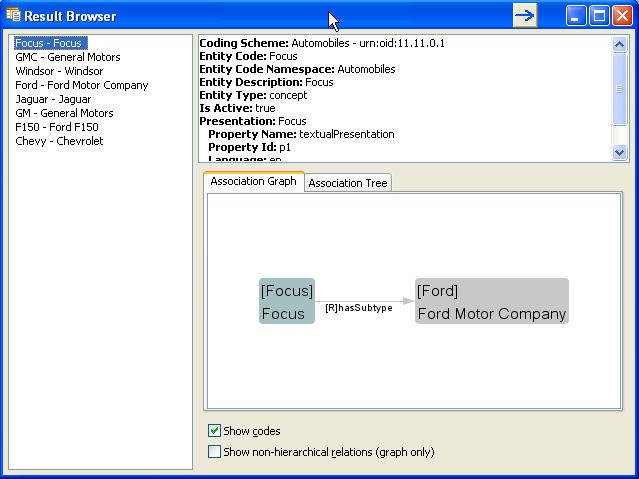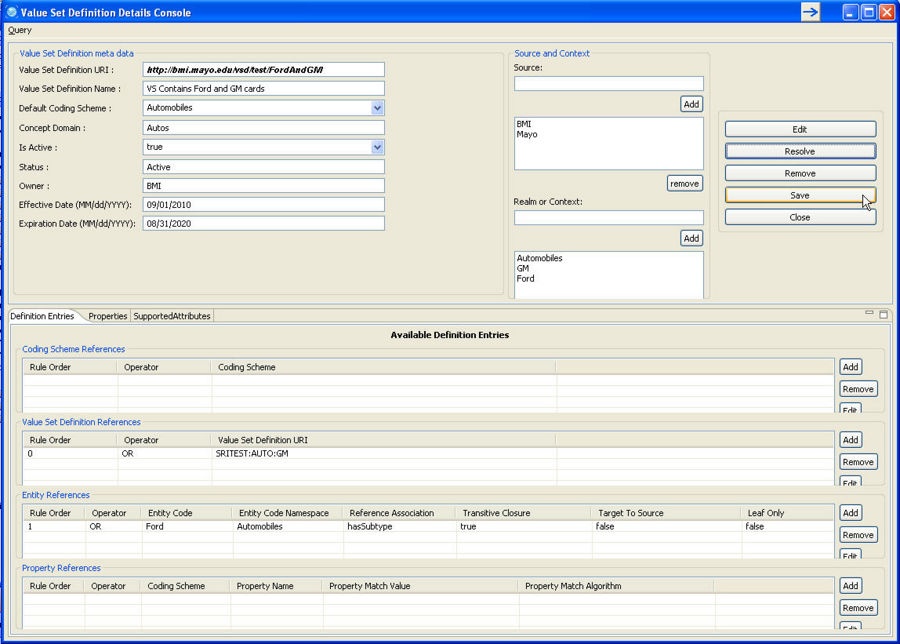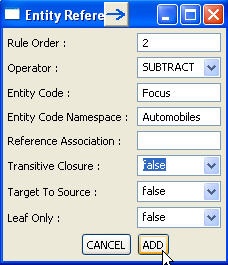 |
Page History
...
Step | Action |
|---|---|
1. Make sure to check 'Enable Admin Options' in 'Commands' menu. |
|
2. Select the Value Set Definition under 'Available Value Set Definitions' to be exported and click on 'Value Set Definition as LexGrid XML' under 'Export' menu. |
|
3. Enter the destination and the file name (should be .xml extension). Choose options appropriately and click on 'Export' button. 'Async Load' – Checking this will export the contents asynchronously'Fail on all errors' – Checking this will stop the export if any error occurs.'force' – Checking this will replace existing file. If there exists a file and this option was not checked, export will fail. |
|
4. Status of an export process will be displayed as the data is getting exported. If everything goes well, you should see 'Errors Logged: false' and 'End State: completed' at the bottom of the status output. |
|
5. Verify the exported file. 'valueSetDefinition' should be the top element and all its available contents (mappings, properties, definitionEntries etc) should be exported. |
|
...
Step | Action |
|---|---|
1. Make sure to check 'Enable Admin Options' in 'Commands' menu. |
|
2. Select the Value Set Definition under 'Available Value Set Definitions' to be exported and click on 'Value Set Resolution as LexGrid XML' under 'Export' menu. |
|
3. Enter the destination for the export at folder level. Choose options appropriately and click on 'Export' button. 'Async Load' – Checking this will export the contents asynchronously'Fail on all errors' – Checking this will stop the export if any error occurs.'force' – Checking this will replace existing file. If there exists a file and this option was not checked, export will fail.Select Coding Scheme And Version: Select the coding scheme version(s) to be used for resolving the Value Set Definition. |
|
4. Status of an export process will be displayed as the data is getting exported. If everything goes well, you should see 'Errors Logged: false' and 'End State: completed' at the bottom of the status output. |
|
5. Verify the exported file. 'codingScheme' should be the top element and all the concepts of the Resolved Value Set should be exported in 'entities' bucket. |
|
...
Step | Action |
|---|---|
1. Make sure to check 'Enable Admin Options' in 'Commands' menu. |
|
2. Select the Pick List Definition under 'Available Pick List Definitions' to be exported and click on 'Pick List Definition as LexGrid XML' under 'Export' menu. |
|
3. Enter the destination and the file name (should be .xml extension). Choose options appropriately and click on 'Export' button. 'Async Load' – Checking this will export the contents asynchronously'Fail on all errors' – Checking this will stop the export if any error occurs.'force' – Checking this will replace existing file. If there exists a file and this option was not checked, export will fail. |
|
4. Status of an export process will be displayed as the data is getting exported. If everything goes well, you should see 'Errors Logged: false' and 'End State: completed' at the bottom of the status output. |
|
5. Verify the exported file. 'pickListDefinition' should be the top element and all its available contents (mappings, properties, pickListEntryNodes etc) should be exported. |
|
...
Step | Action |
|---|---|
1. Click on 'Value Set Definition by Concept Domain' in 'Query' menu at the top. |
|
2. Enter the Concept Domain value and click on 'Filter' button. |
|
3. List of Value Set Definition URIs that has the matching Concept Domain will be displayed in a separate window. You can click on any of the Value Set Definition URIs to get more details. |
|
...
Step | Action |
|---|---|
1. Click on 'Value Set Definition by Coding Scheme' in 'Query' menu at the top. |
|
2. Enter the Coding Scheme value and click on 'Filter' button. |
|
3. List of Value Set Definition URIs that references the entered Coding Scheme will be displayed in a separate window. You can click on any of the Value Set Definition URIs to get more details. |
|
Value Set Definition by Value Set Definition Name
...
Step | Action |
|---|---|
1. Click on 'Value Set Definition by Value Set Definition Name' in 'Query' menu at the top. |
|
2. Enter the full name of the Value Set Definition and click on 'Filter' button. You can leave it blank to get all the Value Set Definitions with no name. |
|
3. List of Value Set Definition URIs that matches the entered name will be displayed in a separate window. You can click on any of the Value Set Definition URIs to get more details. |
|
...
Step | Action |
|---|---|
1. Click on 'Value Set Definition is Sub Set' in 'Query' menu at the top. |
|
2. Select the Child and Parent Value Set Definitions from the drop down list, select Coding Scheme Version(s) to use for resolving both Child and Parent Value Set Definitions and click on 'Check' button. |
|
3. A separate window telling if Child Value Set Definition selected is a Sub Set of selected Parent Value Set Definition will be displayed. |
|
...
Step | Action |
|---|---|
1. Click on 'Value Set Definition has Entity Code' in 'Query' menu at the top. |
|
2. Enter Entity Code to check as well as the Namespace of the Entity Code, Value Set Definition URI and Coding Scheme Version(s) from the drop down lists. And click on 'Check' button. This will check if the Entity Code entered is present in the expanded Value Set when resolved against selected Coding Scheme Version. |
|
3. A separate window telling if entered Entity Code is part of expaned Value Set will be displayed. |
|
Value Set Definition for Entity Term
...
Step | Action | |||||
|---|---|---|---|---|---|---|
1. Click on 'Create Value Set Definition' under 'Create' menu at the top of the tool. |
| |||||
2. Enter Value Set Definition meta data details:
| – | |||||
3. Click 'Save' button. This will persist the Value Set Definition meta data into the database. A separate windows will be displayed confirming the persistence. |
| |||||
4. Click on 'Definition Entries' tab to add definition entries for this Value Set Definition. |
| |||||
5. For this example, lets add Value Set Definition Reference first, click on 'Add' button with in 'Value Set Definition References' group. |
| |||||
6. A separate window will open to enter Value Set Definition Reference data. Set the Rule Order to 0, Operator to OR and select 'SRITEST:AUTO:GM' Value Set Definition URI from the drop down list and click on 'ADD' button. |
| |||||
7. The Value Set Definition Reference data entered in previous step should now be visible in 'Value Set Definition Reference' group. |
| |||||
8. Next, lets create Entity Reference for this Value Set Definition. Click on 'Add' button in 'Entity References' group. |
| |||||
9. In a separate window that opens to enter Entity Reference data, set following values: Rule Order = 1Operator = OREntity Code = FordEntity Code Namespace = AutomobilesReference Association = hasSubtypeTransitive Closure = trueTarget To Source = falseLeaf Only = falseAnd click on 'Add' button. |
| |||||
10. The Entity Reference data entered in the previous step should now be visible in 'Entity References' group. |
| |||||
11. You can resolve the definition now to check what concepts will be returned by the service for this definition.
|
| |||||
12. Select Coding Scheme Version(s) to use against to resolve the Value Set Definition and click on 'Resolve' button. |
| |||||
13. Resolved concepts of the Value Set Definition will be displayed in a separate window. Only concepts related to GM and Ford will be returned. You can click on the concept to get more details. |
| |||||
14. Optionally, you can save the changed Value Set Definition to the database. TO do this, click on 'Save' button. |
| |||||
15. The new Value Set Definition created will now be available at the main console. |
|
...
Step | Action |
|---|---|
1. Click on 'Add' button within 'Entity References' group. |
|
2. Enter the Entity Reference data in a separate window that opens. Make sure that you enter unique number for Rule Order. Rule Order: Mandatory field. The unique identifier of the definition entry within the definition as well as the relative order in which this entry should be applied.Operator: Mandatory field. How this entry is to be applied to the value set. Select appropriate value from the drop down list.Entity Code: Mandatory field. The entity code being reference.Entity Code Namespace: Optional. Local identifier of the namespace of the entityCode. If omitted, the URI of the defaultCodingScheme will be used as the URI of the entity code.Reference Association: Optional. The local identifier of an association that appears in the native relations collection in the default coding scheme. This association is used to describe a set of entity codes. If absent, only the entityCode itself is included in this definition.Transitive Closure: If true and referenceAssociation is supplied and referenceAssociation is defined as transitive, include all entity codes that belong to transitive closure of referenceAssociation as applied to entity code. If true and no referenceAssociation is provided, only the entityCode specified will be included in the definition. If false and referenceAssociation is defined, entityCode specified and immediate nodes associated to the entityCodes will be included in the definition. Default: falseTarget To Source: If true and referenceAssociation is supplied, navigate from entityCode as the association target to the corresponding sources. If transitiveClosure is true and the referenceAssociation is transitive, include all the ancestors in the list rather than just the direct "parents" (sources).Leaf Only: If true and referenceAssociation is supplied and referenceAssociation is defined as transitive, include all entity codes that are "leaves" in transitive closure of referenceAssociation as applied to entity code. Default: false |
|
3. Click on 'ADD' button. | – |
4. Entity Reference added in previous step should now be visible within 'Entity References' group. |
|
5. Click 'Save' button to save the changes. | – |
...
